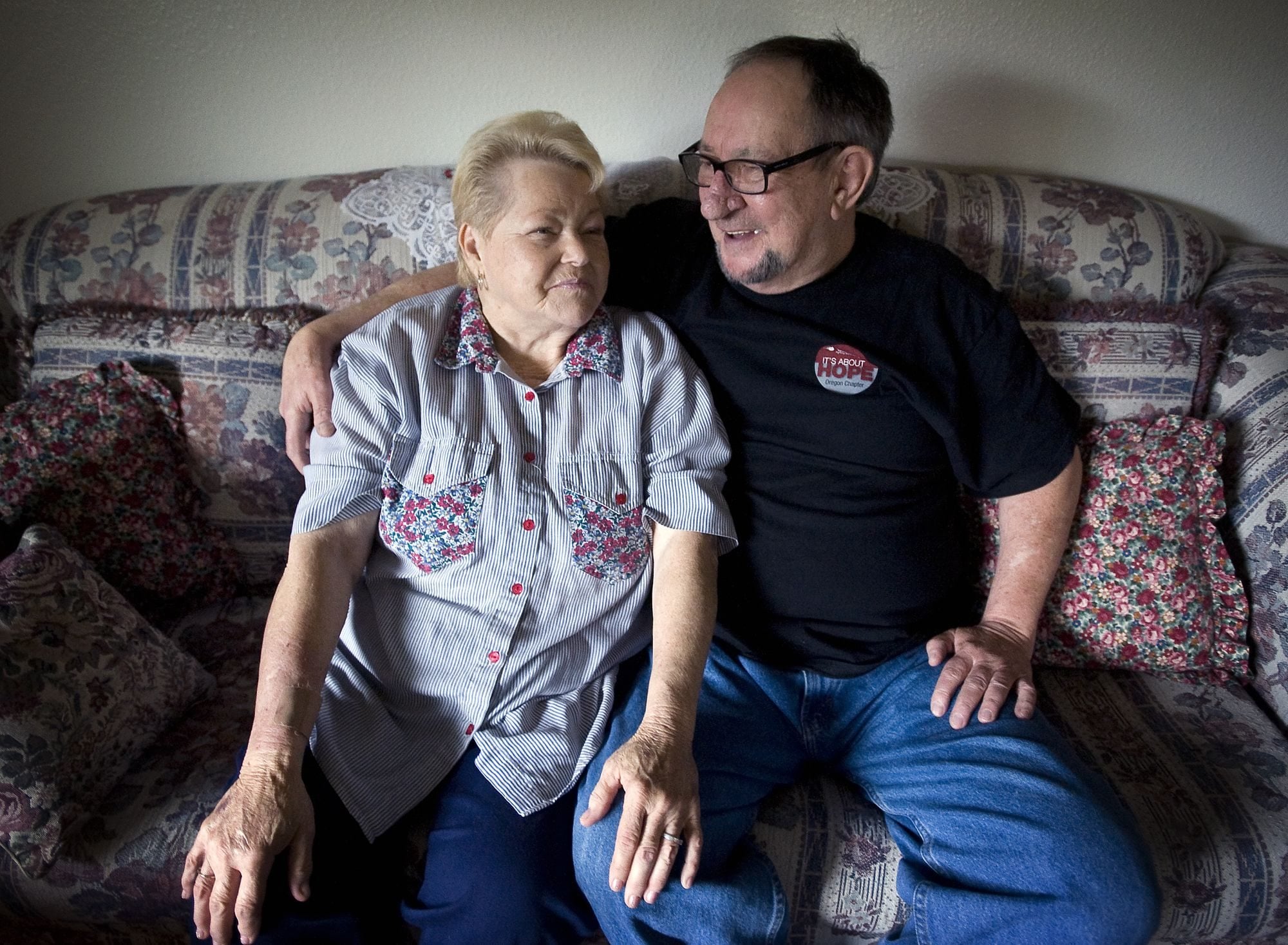LaDonna Lopossa had her funeral planned.
Her sister would sing “How Great Thou Art.” Her grandchildren would sing “Because I Have Been Given Much.” Then the casket she picked out would be lowered into the ground next to her mother’s burial place in the Winlock cemetery.
LaDonna’s spleen was the size of a cantaloupe, full of cancerous white blood cells. It was a matter of days before she would be defeated by a rare blood cancer, chronic myeloid leukemia.
As she lay in bed, her children and grandchildren walked into the room one at a time to say their goodbyes. By that time, LaDonna was too weak to lift herself up.
That was 11 years and three months ago.
Two days after saying goodbye to her loved ones, in early February 2000, LaDonna’s husband, George, drove her from their Winlock home to Oregon Health Sciences University in Portland. They took the elevator to the 14th floor of one of the towers and stepped into the clinic, where a trial for the first targeted chemotherapy drug was taking place.
The drug, then called STI571, would one year later be approved by the Food and Drug Administration and heralded as a “miracle cancer pill.”
This month marks the 10-year anniversary of the FDA’s approval of Gleevec. The chemotherapy pill’s co-developer, Dr. Brian Druker, and LaDonna are featured in a Smithsonian magazine story this month detailing the history of Gleevec.
LaDonna, who moved to Battle Ground eight years ago, is held up as Gleevec’s shining success story. Giving interviews and posing for photos is the least, LaDonna said, she can do to draw attention to the man who saved her life.
“I’m here because of Dr. Druker, and I don’t forget that,” she said. “I’m deeply grateful.”
“I’m on a crusade to get him the Nobel Prize,” the 71-year-old said.
LaDonna can’t remember much from the two weeks before she began taking Gleevec. She decided to go off interferon, the therapy drug she was taking at the time, when she could no longer tolerate the constant vomiting and diarrhea. Once she stopped taking the medication, LaDonna’s condition worsened at a rapid pace.
“I was fading fast, really fast,” LaDonna said. “I was nearly gone.”
“They had done for her all they could, and it was a matter of time before she passed,” George said.
The morphine she was given to ease her pain left her mind in a fog as her body continued to deteriorate. One thing she does remember is telling her children goodbye.
“That was the hardest thing I ever had to do,” LaDonna said as she wiped tears from her eyes.
But less than two weeks later, LaDonna was up out of bed. Her white cell count dropped from more than 220,000 to an acceptable 10,000. LaDonna could feel the energy that had been drained in the months prior begin to surge through her body again. She told George and her kids she wasn’t going to die.
Three months after LaDonna began the Gleevec trial, she visited the Winlock cemetery to place flowers at her mother’s grave site. While there, LaDonna lay on the grass where she was supposed to be buried and posed as George snapped a photo.
Druker and Gleevec meant LaDonna had the chance to see her kids — Terry, Darren, Stephen and Kelly — grow older and watch their families expand. The couple’s other daughter, Shannon, died from meningitis when she was 7 years old. Today, LaDonna is a grandmother to seven and great-grandmother to seven more.
But seven and a half years after LaDonna began taking Gleevec, she relapsed. LaDonna cried when Druker told her she would be taken off the medication.
Two months later, Druker had another drug, Tasigna — or what LaDonna refers to as “son of Gleevec” — for LaDonna to try. Tasigna worked for a couple years before it, too, stopped working. She’s now on her fourth CML-targeted drug, which is unnamed and still in the experimental stages.
She takes four 100-milligram pills every day and has regular lab work to monitor her white blood cell levels. LaDonna keeps active, volunteering at the North County Community Food Bank and genealogy group at her church. She’s also the Battle Ground outreach person for Statewide Health Insurance Benefits Advisors and counsels people diagnosed with leukemia for the Leukemia & Lymphoma Society.
“When I got well, I made a vow to give back,” she said. “I’m kind of afraid not to.”
While all of the 31 people in LaDonna’s Gleevec trial are still alive today, the drug hasn’t been as effective for everyone, LaDonna said. She remembers the names and stories of people who haven’t been as lucky — the 6-year-old boy whose future looked bright; the mother of a 10-month-old baby.
“My life is so happy, but sometimes I get survivor’s guilt still,” she said.
The volunteering, though, keeps LaDonna’s focus on others rather than herself. And that, she said, is what keeps her happy.
“The grass is greener. The sky is bluer. The flowers are prettier,” LaDonna said. “It’s a grandiose, wonderful life.
“I love my second chance at life,” she added.
Marissa Harshman: 360-735-4546; http://twitter.com/col_health or marissa.harshman@columbian.com.




